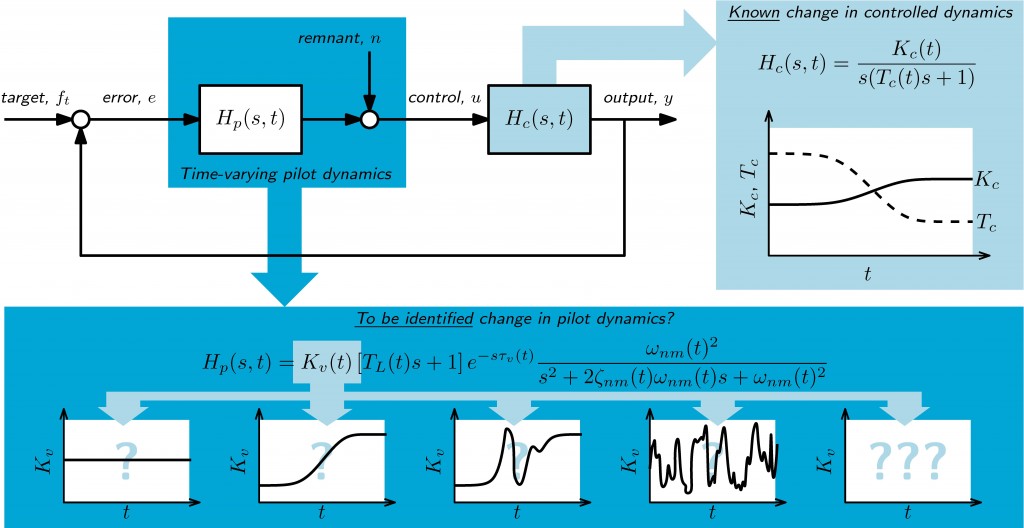Developing methods for quantitative modeling of time-varying changes in human control behavior.
While the majority of what we know about human manual control is restricted to stationary and time-invariant tasks, it is in fact the adaptive nature of the human controller, and how he responds to sudden changes in the environment that is really of interest. A relevant example is a situation where a sudden change in the vehicle or controlled element dynamics occurs (e.g., failure).
Studying the time-varying characteristics of human control behavior requires extension of the current state-of-the-art methods for modeling and identifying pilot control dynamics. Especially valuable for real-world implementation in monitoring systems (e.g., training) and adaptive support systems (e.g., haptic shared control), would be reliable methods that allow for online time-varying identification of human controllers’ unknown temporal control behavior adaptations.
The goal of project is to develop and implement time-varying system identification techniques that allow for online tracking of a priori unknown changes in human control behavior. Many different approaches to time-varying identification (e.g., Recursive Least-Squares, Kalman filters, LPV models) are tested with dedicated human-in-the-loop experiments in TU Delft’s SIMONA Research Simulator, with different time-varying pilot control behavior scenarios.



